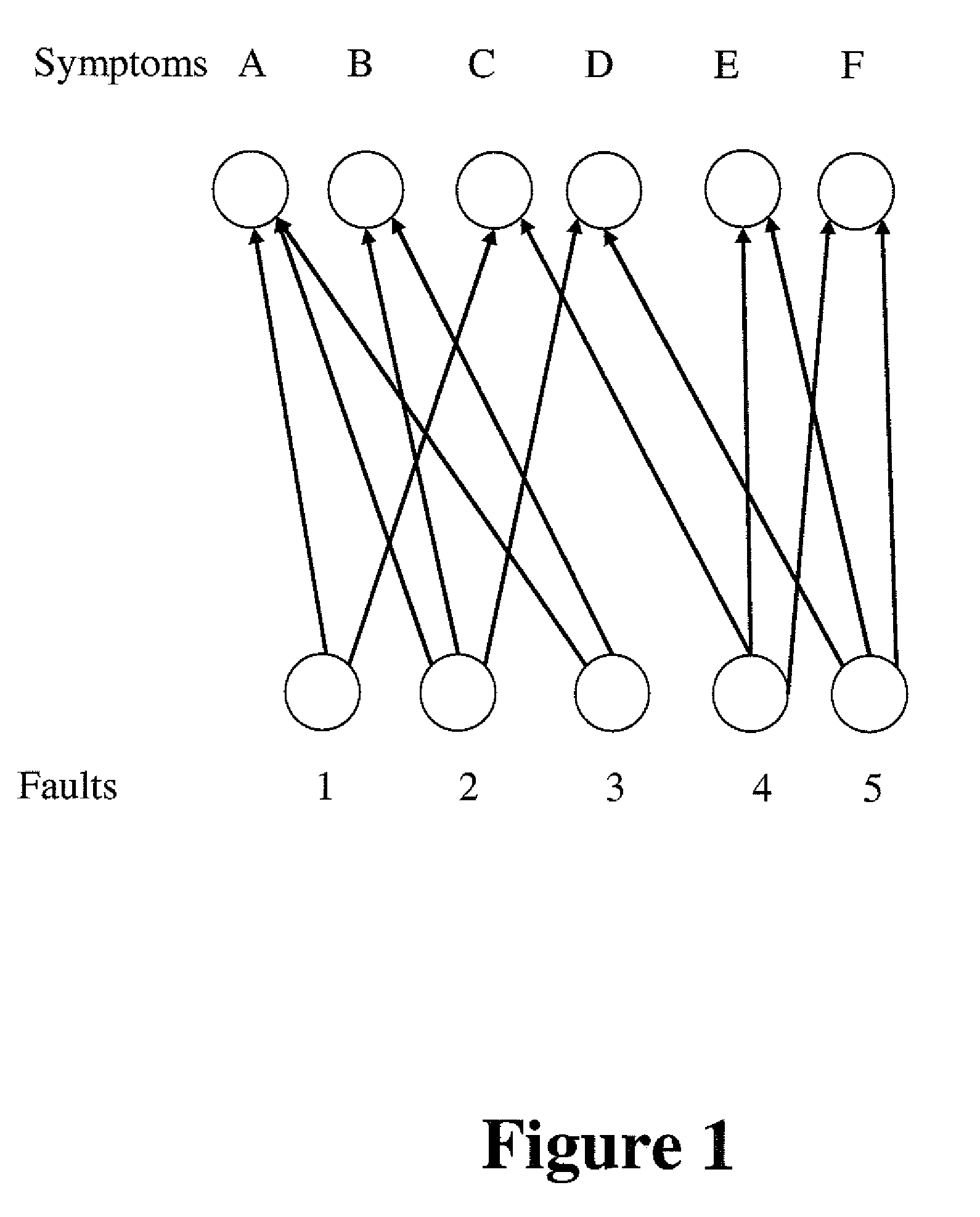Method for automated distributed diagnostics for networks
a distributed diagnostic and network technology, applied in the field of system diagnostics, can solve the problems of limiting the size of the problems that can be solved, failure in many different ways, and the rate of complexity growth, so as to minimize overlap, minimize the presence of cross-domain symptoms, and the effect of high probability
- Summary
- Abstract
- Description
- Claims
- Application Information
AI Technical Summary
Benefits of technology
Problems solved by technology
Method used
Image
Examples
Embodiment Construction
[0030]Referring now to the figures and to FIG. 1 in particular, there is shown the diagnostic problem represented by a bipartite graph. Nodes numbered 1, 2, 3, 4, and 5 represent five objects, each of which might fail (then becoming a fault) and nodes labeled A, B, C, D, E, and F which are six possible symptoms produced by the various faults. The directed links in the bipartite graph display the causal relation between objects and symptoms. For example, if Object 1 fails, symptoms A and C are activated. Symptom D could be activated by the failure of either Object 2 or Object 5, or both.
[0031]Referring to FIG. 2, there is shown the transformation of a bipartite graph of FIG. 1 into its associated relation graph. The objects 1, 2, 3, 4, 5 appear as nodes in the relation graph. FIG. 1 shows, for example, that faults 1 and 2 both cause symptom A; hence, the corresponding nodes in the relation graph of FIG. 2 are connected by a ‘relational link’. Similarly, since symptom A in FIG. 1 is a...
PUM
 Login to View More
Login to View More Abstract
Description
Claims
Application Information
 Login to View More
Login to View More - R&D
- Intellectual Property
- Life Sciences
- Materials
- Tech Scout
- Unparalleled Data Quality
- Higher Quality Content
- 60% Fewer Hallucinations
Browse by: Latest US Patents, China's latest patents, Technical Efficacy Thesaurus, Application Domain, Technology Topic, Popular Technical Reports.
© 2025 PatSnap. All rights reserved.Legal|Privacy policy|Modern Slavery Act Transparency Statement|Sitemap|About US| Contact US: help@patsnap.com



